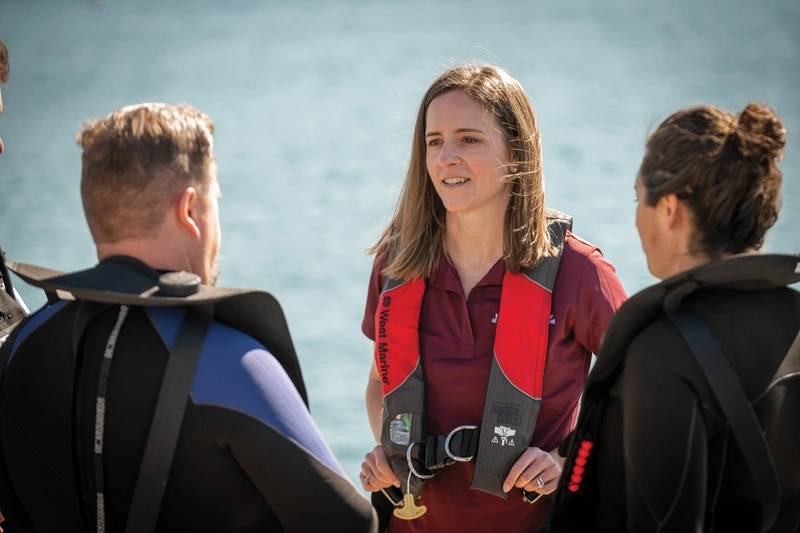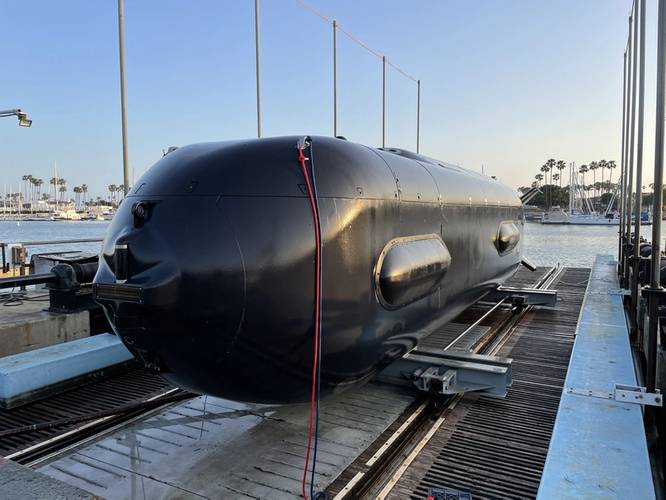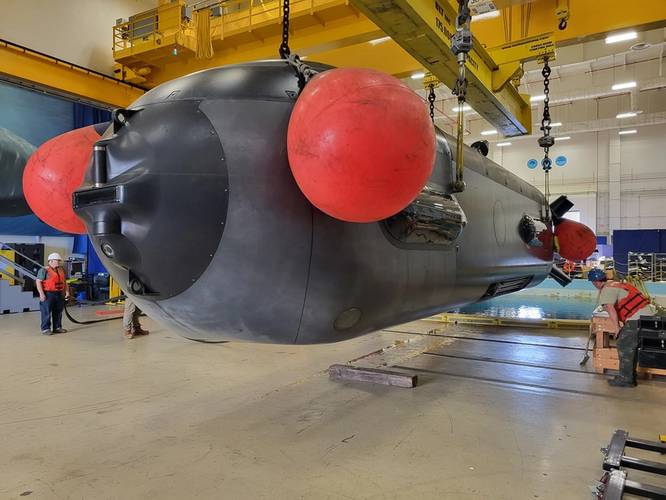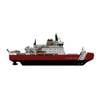Inside Boeing's Orca XLUUV for the US Navy
Boeing delivered the first Orca Extra Large Uncrewed Undersea Vehicle (XLUUV) to the U.S Navy following acceptance testing, the first of six Orca XLUUVs to be delivered to the U.S. Navy over the next 18 months. The first unit is to be used as a test asset for the Navy, so it doesn’t have a payload section, said Ann Stevens, VP, Boeing Maritime and Intelligence Systems.
The XLUUV, designated by the Navy as “Orca,” is a new class of autonomous submarine designed for long duration critical missions to achieve undersea maritime dominance.
“This is the culmination of more than a decade of work, developing a long-range, fully autonomous undersea vehicle with a large payload capacity that can operate independently of a host vehicle,” said Stevens. Back around 2010/11, then Chief of Naval Operations (CNO) Admiral Gary Roughead and the U.S. Navy signaled strong interest in uncrewed subsea vehicles, specifically vehicles with increased endurance to allow them to be deployed and held in position until needed.
“We listened to that and we put ourselves into that customer space to invent something that has persistence, that doesn’t require a host vessel to deploy, recover, or sustain for long periods of time, and that has big payload capacity,” said Stevens.
 “The sky’s the limit in terms of payloads that can be brought into the vehicle.” Ann Stevens, Vice President, Boeing Maritime & Intelligence Systems - Image courtesy Boeing Maritime and Intelligence Systems
“The sky’s the limit in terms of payloads that can be brought into the vehicle.” Ann Stevens, Vice President, Boeing Maritime & Intelligence Systems - Image courtesy Boeing Maritime and Intelligence Systems
So Boeing started developing what it called Echo Voyager, the first XLUUV class of vehicle, back in 2012-2013, putting it to sea in 2016-2017. “It spent 10,000 hours at sea, and continued on through the Navy’s acquisition of the Orca vehicle,” said Stevens. When asked to define the outstanding characteristics of Orca, Stevens starts with the payload section.
“You’ve got 34 by 8.5 by 8.5 feet; you could actually fit four LDUUVs in the payload section of an XLUUV. So that’s really a big differentiator right there.” The other differentiator is range. The diesel-electric powered Orca has a total endurance of around 6500 nautical miles. “You can go for months at a time without requiring a host ship or any sort of sustaining operation at sea,” said Stevens.
Designing, building and delivering advanced UUVs is one thing; ensuring that the platform is resilient from technology obsolescence is another. In this regard, Stevens said “this platform is particularly open in that you can deliver it with a payload or not. If we just take payload capability alone, there’s an ICD (Interface Control Document) that anyone can develop to, both software and hardware. What we provide is the vehicle and some hardware dimensions to interface into. Anybody can bring a payload carriage, it doesn’t have to be developed or vendor locked in, and then software as well. So we just say the payload design itself has to provide some neutral buoyancy and it has to fit within a certain power requirement. Otherwise the sky’s the limit in terms of payloads that can be brought into the vehicle.”
The Orca XLUUV graces the cover of the January/February 2024 edition of Marine Technology Reporter




















 December 2025
December 2025



